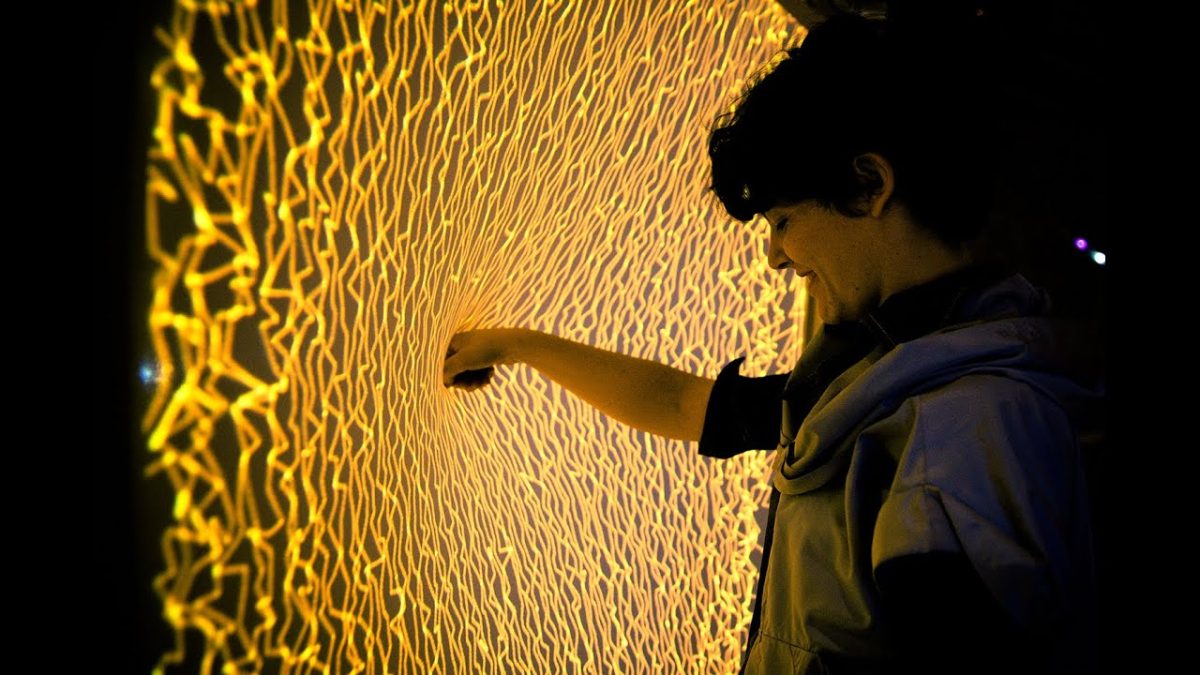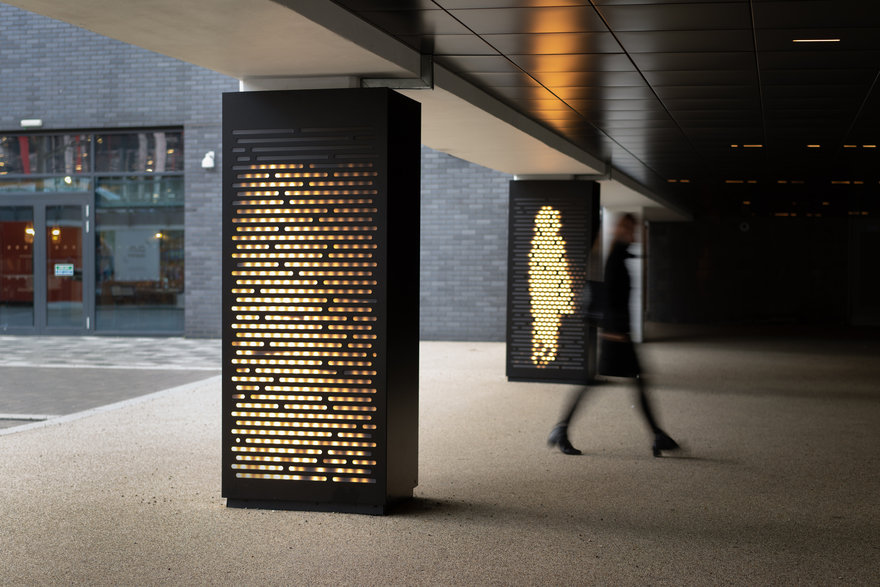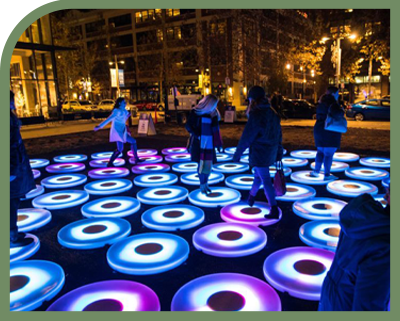

In today’s world, where interaction and experience have become the most essential components of public and cultural spaces, the role of technology in designing interactive elements has gained unprecedented importance.
Today’s audience is no longer merely a spectator; they seek participation, touch, experience, and immersion in narratives.
This growing demand has driven designers to leverage emerging technologies as tools for creating multidimensional and intelligent experiences.


Interactive elements are features placed in urban spaces, parks, cultural centers, exhibitions, and commercial environments that engage with the audience, making them active participants in the experience of a space.
Technological advancements now offer capabilities such as motion sensors, smart lighting, augmented reality (AR), virtual reality (VR), and interactive audio-visual systems, significantly enhancing these elements.
Beyond increasing visual appeal and entertainment, technology plays a vital role in conveying cultural and social concepts and narratives.
For instance, an interactive element equipped with touch sensors and dynamic lighting can respond instantly to the presence and movement of the audience, creating a sensory and emotional connection within the context of a story or social message.
Such experiences have a much deeper impact compared to static installations, leaving a lasting impression in the audience’s mind.



Furthermore, the data-driven nature of interactive technologies allows designers to track and analyze audience behaviors and feedback as they engage with these elements.
This data becomes an invaluable resource for optimizing spatial experiences, shaping future cultural programs, and even informing urban design strategies.
In essence, technology serves as a bridge between art, architecture, and the audience in the design of interactive elements.
The fusion of digital techniques with artistic concepts and social functions leads to the creation of works that are not only aesthetically appealing but also communicative and deeply engaging experiences.
In today’s experience-driven era, considering the role of technology in designing interactive elements is no longer a choice but a necessity—one that smart cities, cultural spaces, and innovative projects cannot afford to overlook if they aim to attract and engage audiences effectively.